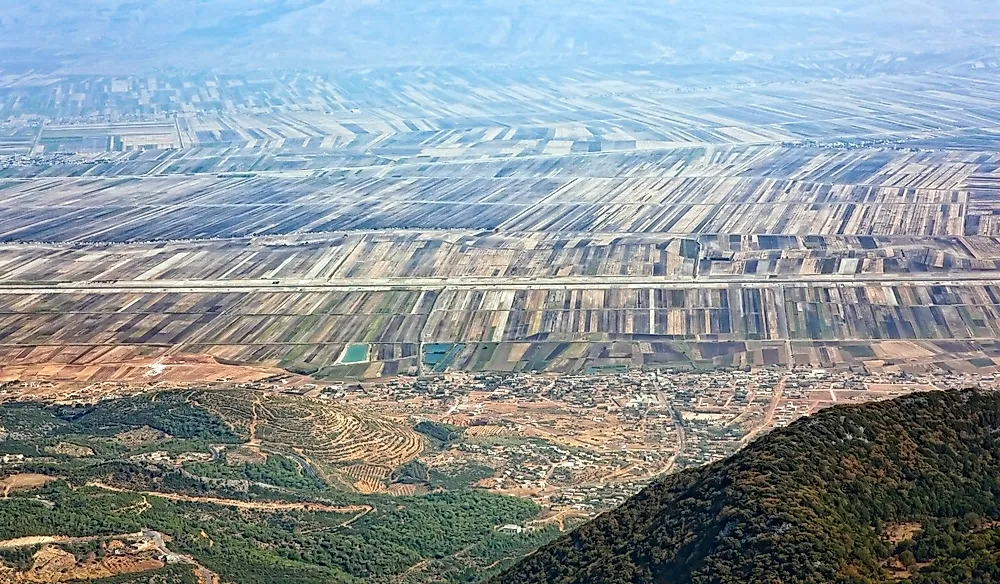What Are The Biggest Industries In Syria?

The Western Asian nation of Syria covers a land area of about 185,000 square kilometers and has a population of approximately 18 million. The largest and capital city of Syria is Damascus. Syria was among the founding members of the United Nations. Historically, the country emerged from the ruins of the Ottoman Empire. The economy of Syria has been negatively affected by the civil war that has been going on in the country for many years. Its GDP is US$24.6 billion. Presently, the industries that drive the Syrian economy are agriculture, services, and manufacturing.
Brief History of the Economy of Syria
The economy of Syria was characterized by socialist policies of land reform and nationalization. Following a serious economic crisis in the 1980s, the country underwent a series of economic reforms in 1990. These reforms aimed at boosting the economy of Syria by encouraging privatization. However, the government was still in control of the majority of the institutions and the private sector restrictions continued. Due to the 1990 reforms, the economy of Syria grew strong in the 1990s and 2000s with the per capita GDP rising to US$4,058 in 2010. The economy is highly dependent on exports to the Middle East and North Africa. Although the services, agriculture, and manufacturing industries may be identified as the economic drivers of Syria, the economy is suffering greatly due to the ongoing civil war.
Agriculture Industry
The agriculture industry employs one-fourth of Syria’s population. As a result, it is a major source of income and contributes 16.9% of the GDP of Syria. The popular crops cultivated for purposes of consumption by the farmers and their families include wheat and sugar beet. Besides these crops, the Syrian farmers also cultivate corn, barley, and millet. The cash crops grown in Syria include cotton, fruits and vegetables (such as tomatoes, watermelons, onions, and potatoes, grapes, apples, citrus fruits), and tobacco. High-grade tobacco is typically grown around Latakia region. Farmers also engage in animal rearing. The livestock reared are sheep, cattle, poultry, and camels. Small-scale fishing is also practiced in Syria. The fishermen catch fish such as red and grey mullet, tuna, tunny, sardines, and groupers. Syria has a relatively small portion of forests. As a result, the country has to import timber for construction and other uses.
Manufacturing Industry
The main industries in Syria are petroleum, tobacco, textiles, beverages, and food processing. Within the textiles industry, the country is known for the production of wool, nylon, cotton, and natural silk textiles. The factories that manufacture these textiles are found in Aleppo, Hamah, Damascus, and Homs. There are also engineering industries in Syria which deal in both industrial and chemical engineering. The engineering companies produce glass panes, pharmaceuticals, plywood, utensils, bottles, batteries, and cement among others. The industries in Syria also engage in food processing of foods such as canned fruit and vegetables, dairy products, vegetable oils, and salt. Hand-made products such as gold and silver ornaments, wood engravings, damask steel, and silk brocades also constitute the manufacturing industry.
Historically, Syria used to have a booming oil industry. However, oil production in the country has reduced from 600,000 barrels per day in 1995 to only 32,000 barrels per day in 2014. ISIS, a militia group, have taken over the oil reserves and the government no longer controls oil production in the country. Prior to the civil war, Syria had been a large exporter of oil to the European Union member countries. Subsequently, oil exports accounted for 25% of the government’s revenue. The exports also contributed close to 20% of the GDP of Syria.
Services Industry
In 2017, services accounted for approximately 60% of Syria’s GDP. The sector is also responsible for employing a large number of workers. For instance, in 2008, the services sector employed around 67% of the country’s labor force. The percentage rose in 2009, leading to a significant increase in the prices of office space. The areas of the economy that relate to the services sector are the tourism sector, as well as banking and finance. In 2002, non-Arabic tourists amounted to about 1.1 million. However, the numbers have dropped due to the ongoing civil war which commenced in 2011. The banking sector in Syria has been affected by the many sanctions that the country has had to contend with due to the civil war. Countries that have issued sanctions include Canada, Turkey, the United States, the European Union, and the Arab League.
The transport industry in Syria is quite developed. The country has four international airports namely Aleppo, Lattakia, Damascus, and Kamishly. As of 2012, Syria had 99 airports. Out of these airports, 29 have paved runways while 70 have unpaved runways. The Syrian Railways is responsible for the transport of cargo from Syria to several destinations. The railway links up with the Turkish State Railways which is 2,052 kilometers long. It also links the country to its neighboring countries like Iraq, Turkey, and Jordan. Despite the civil war that has been ongoing in Syria for many years, the railways have been well maintained. The country even offers express services as well as modern train services. Besides the railways and airports, the road networks in Syria are also quite developed. The country has a road network that is 69,873 kilometers long. Out of this length, 61,514 kilometers of the road is paved. Syria also has a trans-desert bus service that transports residents from Syria to Beirut, Baghdad, Haifa, and Damascus. The country also has navigable waterways that are approximately 900 kilometers long. However, they are rarely utilized for commercial purposes.











